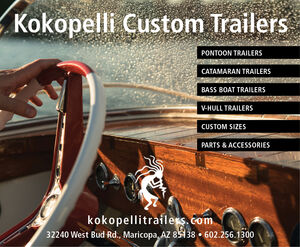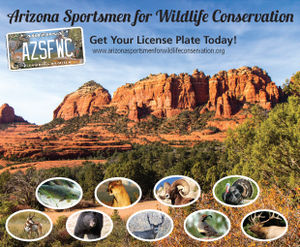Kids And OHVs - When Are They Ready To Safely Ride?
One size doesn't fit all and other key considerations.
May 1, 2018
Exploring Arizona from an off-highway vehicle (OHV) provides a great way to view the state's beautiful scenery and spend quality time with family and friends. While children may be eager to climb aboard - or parents ready to share their love of the hobby with kids - OHVs aren't toys and there are many questions to answer before allowing youngsters to take the handlebars or steering wheel.
Five Different Categories
For example, there are five different categories of all-terrain vehicles (ATVs) and each vehicle has a warning label that states requirements regarding the minimum age of the rider, according to the ATV Safety Institute. These safety labels clearly highlight the seriousness that everyone should employ when riding an ATV: "Operation of this ATV by children under the age of X increases the risk of severe injury or death. Adult supervision required for children under the age of 16."
Readiness Checklist
The ATV Safety Institute also provides a readiness checklist to help individuals determine if their child is ready to ride an ATV. The checklist covers information like physical development, visual perception/motor development, social/emotional development, and reasoning and decision-making ability.
However, it also clarifies that "the decision is yours" and "there are no suggestions as to how many of the following abilities are necessary, nor the degree of ability that your child should have."
Not One And The Same
When it comes to other types of OHVs, another organization wants it to be clear that ATVs and recreational off-highway vehicles (ROVs) are not one and the same even though they are used for similar types of recreation. According to the Recreational Off-Highway Vehicle Association, ROVs are "driven" - they have a steering wheel and foot pedals for acceleration and braking.
By comparison, ATVs are "ridden," have a handlebar for steering, a throttle controlled by a thumb lever, hand levers for brakes and a foot pedal for the rear brake.
Another major difference: ROVs are designed to be operated by individuals age 16 or older. The different size models of ATVs allow children as young as 6 to ride the vehicle, with adult supervision of course.
Education Is The Key
In addition to following the requirements set by manufacturers, education is the key to safely introducing people of any age to OHVs. The Arizona Game and Fish Department's website links to a number of hands-on courses that are offered by different groups as well as online classes.
Safety Gear
Once it's been decided that it's time to introduce a newbie to the world of OHVs, don't forget the safety gear. All OHV operators or passengers younger than 18 are required to wear a U.S. Department of Transportation-safety rated helmet (and they're strongly recommended for everyone).
Motorcycle goggles or a full-face shield are legally required for all riders if the OHV isn't equipped with a windshield. See the complete list of protective gear in the "OHV Laws and Places to Ride" brochure: https://www.azgfd.com/PortalImages/files/OHV/atv_brochure.pdf
And finally, if the OHV is equipped with seatbelts, wear them. They'll help keep the operator and any passengers inside the vehicle in the event of an accident and could help prevent a tragedy.












Reader Comments(0)